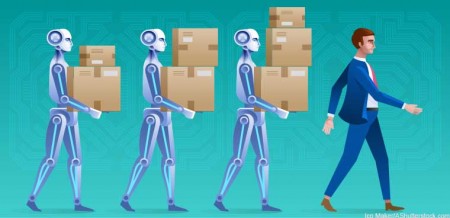By Patrick Marshall Aug 13, 2018

Scientists at the Army Research Laboratory and Carnegie Mellon University’s Robotics Institute are teaching robots how to be better mission partners to soldiers — starting with how to find their way with minimal human intervention.
Given that autonomous vehicles have been navigating streets in many U.S. cities for over a year, that may seem like not that big a deal. But according to ARL researcher Maggie Wigness, the challenges facing military robots are much greater. Specifically, unlike the self-driving cars being developed by Google, Uber and others, military robots will be operating in complex environments that don’t have the benefit of standardized markings like lanes, street signs, curbs and traffic lights.
“Environments that we operate in are highly unstructured compared to [those for] self-driving cars,” Wigness said. “We cannot assume that there are road markings on the roads, we cannot assume that there is a road at all. We are working with different types of terrain.”
The challenges extend beyond unmarked and variable terrain. The training of self-driving cars “requires a tremendous amount of labeled training data,” Wigness said. “That is something we don’t have the luxury of collecting in an Army-relevant environment, so we are focusing more on how to learn from small amounts of labeled data.”
Specifically, in the ARL project, the robots are trained to navigate environmental features following examples provided by humans.
Luis Navarro-Serment, senior project scientist at Carnegie Mellon University’s Robotics Institute, offered an example. “Say there’s a puddle,” he said. Humans will generally move to avoid the puddle. By observing, the robot can learn to do the same. “It’s a form of emulation,” Navarro-Serment said.
In the ARL project, humans assigned weights to the various features in the environment to help the robot learn to resolve conflicting commands. “For example, we train a robot to drive on road terrain and avoid the grass, so it learns the grass is bad to drive on and the road is good to drive on,” ARL researcher John Rogers said. But then the team gave the robot an additional command to avoid the field-of-view of a sniper. The robot, he said, “needs to balance these two goals simultaneously. It needs to break one of the behaviors.” Presumably, with proper weighting of factors the robot will opt to drive on the grass.
“In the ultimate vision of this research, the robot will be operating alongside soldiers while they are performing the mission and doing whatever specific duties it has been assigned,” said Rogers.
The ARL project — which is a part of the Army’s Robotic Collaborative Technology Alliance — is scheduled to conclude, along with other RCTA projects, in the fall of 2019. By that time, Wigness said, the team will have developed a demonstration of the learning technology.
Patrick Marshall is a freelance technology writer for GCN.